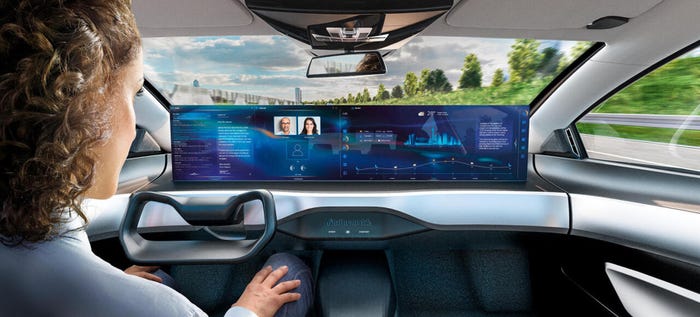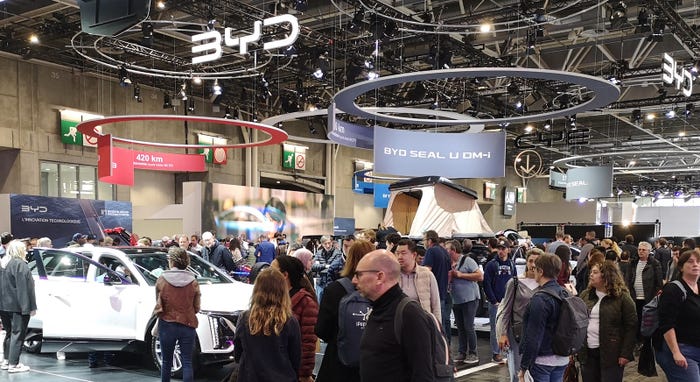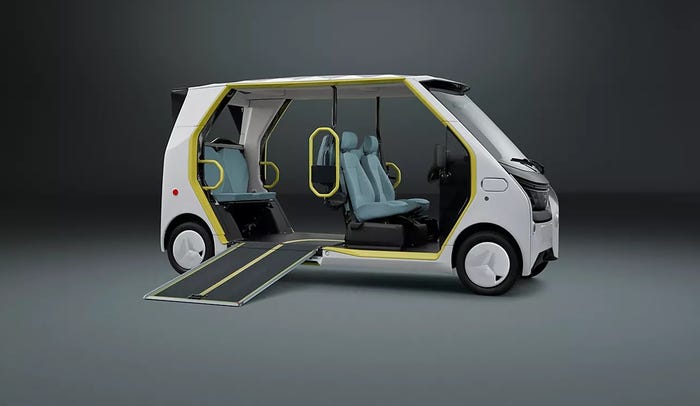Luxury Market Has Stronger Presence on Ward's Dealer Ranking
One of every five stores on the Ward's Dealer 500 sells luxury vehicles.
June 15, 2006



A record 100 luxury-vehicle dealerships representing nine brands made this year’s Ward’s Dealer 500, 19 more than last year, showing the growth of the premium automotive segment.
Yet a mere 20 years ago, industry experts were skeptical of auto makers’ attempts to launch new luxury brands.
During the late 1980s, one of the hot topics of conversation centered on the wisdom of Japanese auto makers launching upscale brands such as Lexus, Acura and Infiniti in the U.S. market.
In fact, Auto Age magazine (which later became Ward’s Dealer Business) in November 1987 ran a story debating the upmarket move.
Many analysts and dealers questioned whether the U.S. could digest the new brands. Meanwhile, it was a tough time for many dealers and asking them to invest in new facilities, especially upscale stores, was thought to be foolhardy.
In the Auto Age story, one Honda dealer branded as “folly” Nissan North America Inc.’s decision to launch Infiniti and Toyota Motor North America Inc.’s decision to start Lexus.
Other dealers, though, such as David Wilson in Southern California, accurately predicted Toyota’s strategy would work because of the success of its dealer body. Wilson’s Tustin Lexus store is 91st on this year’s Ward’s Dealer 500, with $158 million in total revenue.
Wilson, though, was leery about Nissan’s Infiniti plan, mainly because the dealer body had had such a tough time during the 1980s. But Infiniti sold 136,401 units in 2005, a 4.1% increase over the previous year.
The luxury market now is hot and one of the fastest-growing parts of the business.
Ward’s expects the share for luxury brands to top 11% for entire 2006. Right now, the share is 10.8%. But luxury share tends to rise in the second half of the year after the spring selling season, which – in terms of share – tends to favor more mainstream vehicles.
“The demographics for this business are absolutely fantastic,” says Michael Jackson, CEO of AutoNation Inc., the nation’s largest dealership chain.
He says much of the segment’s growth comes from baby boomers treating themselves to premium vehicles as they continue to flex their financial muscle. “The baby boomer generation is behaving differently than any other generation in history. They are not going to retire quietly.”
Jackson predicts the premium luxury market will be a fast-growing segment in the next five to 10 years, pointing to vehicles such as Mercedes-Benz’s new S-Class and the Lexus LS 460, both launched this year.
It is unusual to see two premier brands launch flagship products in the same year, Jackson says. “Both are bursting with innovation. It’s going to be something to see.”
The 100 luxury stores on this year’s Ward’s Dealer 500 generated nearly $13.5 billion in revenue in 2005, averaging about $131.6 million in total sales.
Meanwhile, there are 14 non-luxury brands (including those classified as multi-brands) accounting for the other 400 dealerships. Those stores averaged about $122.5 million in total revenue.
As a group, the Ward’s 500 set a record for total sales in 2005, with revenues of nearly $62.6 billion. Every profit center posted increases, with new-car departments generating an average of nearly $3 million more than in 2004.
Data shows Lexus has become the premier franchise to own. The brand sold a total of 302,895 units in 2005, an increase of 5.2% over 2004. Of its 174 U.S. dealerships, 32 are on this year’s Ward’s 500 list, with an average total revenue of $132.7 million, only behind Mercedes stores and dealerships selling multi-brands.
Related document: 2006 Ward's Dealer 500 Franchise Averages
Infiniti and Honda’s Acura Div. produced more modest results, accounting for only six dealerships on the 500 ranking this year.
Honda executives envisioned 600 Acura dealerships when the auto maker launched the luxury brand in the 1980s. However, Acura currently has slightly more than 200 dealerships, while Infiniti has approximately 150 stores.
Nevertheless, luxury stores, including those selling European vehicles, have increased their numbers significantly in the Ward’s 500 ranking. Of AutoNation’s 107 dealerships on this year’s list, 27 are luxury stores that generated $3.7 billion of the company’s $18 billion revenue in 2005.
Since Jackson (the former president of Mercedes-Benz USA) joined AutoNation in 1999, the company’s emphasis on the luxury segment has intensified. Some 22% of its revenue in the first quarter came from luxury sales, double like-2000. Luxury sales in the first quarter rose 15% for the dealer group.
AutoNation, meanwhile, has increased its luxury brand presence from 40% of its portfolio to 60% since 2000.
United Auto Group reports similar numbers, with 5.8% revenue growth at its premium-brand dealerships, many of them European brands. Seven of UAG’s 24 dealerships on this year’s Ward’s Dealer 500 list are luxury brands.
While Lexus garners much of the attention, 26 Mercedes dealerships on this year’s Ward’s 500 averaged the most in total revenue of any brand. It has been that way since 1999.
Mercedes’ average revenue of $162 million for 2005 is a record. It is $20 million more than the second-place multi-brand stores and $23 million more than Lexus averaged.
Morton Zetlin, owner of the 56th-ranked American Service Center, a Mercedes dealership in northern Virginia, says the brand has been strong for years because of its strong products.
“And we have a lot of new products coming,” he says. “I’m excited about the new diesels that have the Bluetec (wireless) technology.”
Although quality issues have plagued Mercedes in recent years, many dealers consider this the brand to have. Says one executive with large dealership group in the Southeast: “Mercedes is hot. I would love to get more.”
Publicly owned dealerships have bought some high-profile Mercedes stores recently.
Sonic Automotive Group last year acquired the 54th-ranked W.I. Simonson Mercedes- Benz dealership in Santa Monica, CA.
AutoNation is buying Autohaus Mercedes Benz in Pompano Beach, FL, and intends to build a new Mercedes store in Pam Beach, FL. That would give AutoNation seven Mercedes franchises. “We are looking to add more,” says AutoNation President Mike Maroone.
Stan Rodia, service director for American Service Center, say Mercedes quality issues are less a story today than they were a couple years ago.
“There were a lot of intermittent problems that are the bane of the industry,” he says. “Much of that was because of the advanced electronics on the vehicles. Mercedes was pushing the envelope with new technology because it is one of the top brands.”
With 25 of its 215 dealerships on this year’s list (the same as last year), BMW is another solid luxury brand. The average revenue per store, however, is down slightly, from $119.8 million in 2004 to $117.8 million in 2005.
Average BMW new-unit sales per dealership on the Ward’s Dealer 500 were down 997 units (although overall U.S. sales were up 3.7%).
In 2005, UAG’s 31 BMW/Mini dealerships generated 15%, or $1.5 billion, of its total revenue. The group added to its BMW total this spring, acquiring Motorwerks BMW/Mini in Bloomington, MN.
European and Japanese premium brands are the primary drivers of the luxury segment’s strong showing on the Ward’s 500.
The closest Big Three contender, General Motors Corp.’s Cadillac division, has five dealerships on this year’s list, averaged $132.2 million, down from $150.2 million in 2004. Cadillac dealerships sold an average of 319 fewer new vehicles, yet posted an average $16 million decline in new car revenue. Average revenue per new-car sale dropped nearly $1,500 to $39,000.
While luxury brands are posting impressive numbers on the Ward’s Dealer 500 ranking, non-luxury brands remain healthy.
Interestingly, GM’s Chevrolet brand’s dealerships on the list averaged almost $10 million more in total revenue than BMW stores. Chevrolet, though, saw its dealership totals on the list drop from 79 last year to 58 this year.
Likewise, Ford dealerships declined to 67 – down from 87 last year and 138 in 2000.
The average Ford store on the Ward’s 500 sold 180 fewer vehicles than in 2004, yet average total revenue stayed almost par, down only $12,000 to $10.5 million.
While average new-car revenue declined $1.8 million, with 180 fewer average units sold, Ford dealerships showed an ability to adapt, posting slight gains in the other departments, led by parts and accessory sales that increased $1 million.
Chrysler-Jeep-Dodge stores on the ranking increased from seven in 2004 to 12 in 2005, although average revenue per store declined $2.8 million to $111.7 million.
Japanese non-luxury brands significantly increased their dealership totals on the Ward’s Dealer 500. Toyota added 15 and Honda added 11.
Honda’s average total revenue in 2005 jumped by almost $6 million on the strength of increased sales revenue in both new- and used-car departments. The auto maker averaged seven more new-car sales in the year compared with 2004, yet increased its new-car revenue $3.2 million, an indication of increased vehicle value and more upscale products.
However, Honda still lagged behind brands such as Ford, Chevrolet and Chrysler-Dodge-Jeep in average revenue.
Toyota’s average total revenue for 2005 also increased, up about $5 million, with higher average revenue in each department led by new-car sales, which averaged $1.3 million more than in 2004.

About the Author
You May Also Like

.jpg?width=700&auto=webp&quality=80&disable=upscale)

